
Small quake clusters can’t hide from AI
A deep learning algorithm developed at Rice University analyzes data from a deadly landslide in Greenland to show how it may someday predict seismic events like earthquakes and volcanic eruptions.

Small quake clusters can’t hide from AI
A deep learning algorithm developed at Rice University analyzes data from a deadly landslide in Greenland to show how it may someday predict seismic events like earthquakes and volcanic eruptions.
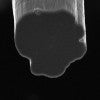
No limit yet for carbon nanotube fibers
Rice University researchers report advances in their quest to make the best carbon nanotube fibers for industry.
Ghasempour receives 2020 Marconi Society Young Scholar Award
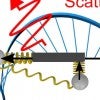
Cartwheeling light reveals new optical phenomenon
Researchers at Rice University have discovered details about a novel type of polarized light-matter interaction with light that literally turns end over end as it propagates from a source.
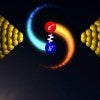
Rice lab’s bright idea is pure gold
Physicists discover plasmonic metals can produce “hot carriers” that emit unexpectedly bright light in nanoscale gaps between electrodes.

People, papers and presentations Jun 29, 2020
Topics to be discussed are agriculture, energy, women’s health and plastics.

Purifying water with a partly coated gold nanoparticle
Rice's Naomi Halas has collaborated with Yale University engineers on the creation of a light-activated nanoparticle for clearing water of pollutants. The research is part of an effort by NEWT, the Rice-based Nanosystems Engineering Research Center for Nanotechnology-Enabled Water Treatment.
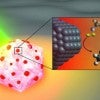
Fluorocarbon bonds are no match for light-powered nanocatalyst
Rice University engineers have created a light-powered catalyst that can break the strong chemical bonds in fluorocarbons, a group of synthetic materials that includes persistent environmental pollutants.

NSF RAPID grant supports COVID-19 'computational pipeline'
Lydia Kavraki wins a NSF Rapid Response Research grant to help identify SARS-CoV-2 viral proteins for vaccine development.

Rice engineers offer smart, timely ideas for AI bottlenecks
Rice researchers demonstrate methods to design data-centric hardware and co-designing hardware with machine-learning algorithms that can improve energy efficiency in artificial intelligence hardware.
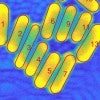
New tool helps nanorods stand out
Rice scientists introduce an open-source method to simplify nanoparticle analysis using scanning electron microscope images.
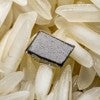
Rice team makes tiny, magnetically powered neural stimulator
Rice University neuroengineers have created a tiny surgical implant that can electrically stimulate the brain and nervous system without using a battery or wired power supply.

Three Rice students receive Hertz Fellowships
The Hertz Fellowship is as prestigious as it is selective: Only 16 fellows each year are admitted to the program, which funds five years of graduate research and offers lifelong professional support through the Fannie and John Hertz Foundation.

Rice's COVID-19 research fund awards final grants
The Rice University COVID-19 Research Fund Oversight and Review Committee funds nine more faculty teams working to mitigate the effects of the new coronavirus.
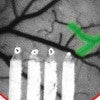
Blood flow recovers faster than brain in micro strokes
Work by a Rice neurobiologist shows that increased blood flow to the brain is not an accurate indicator of neuronal recovery after a microscopic stroke.